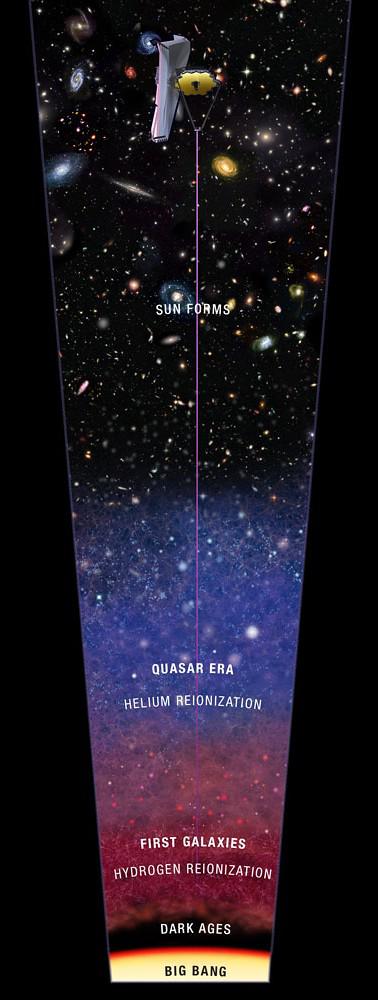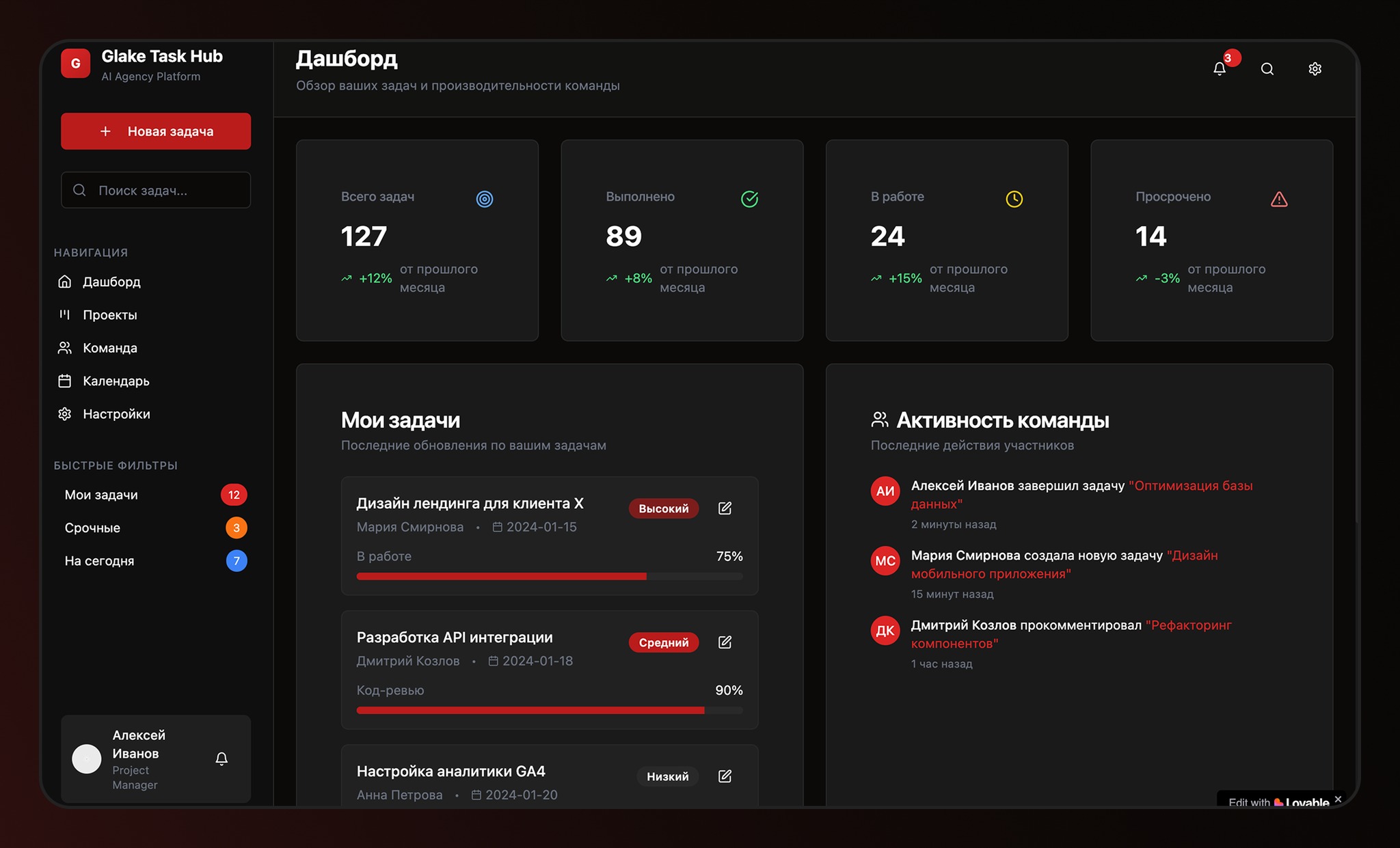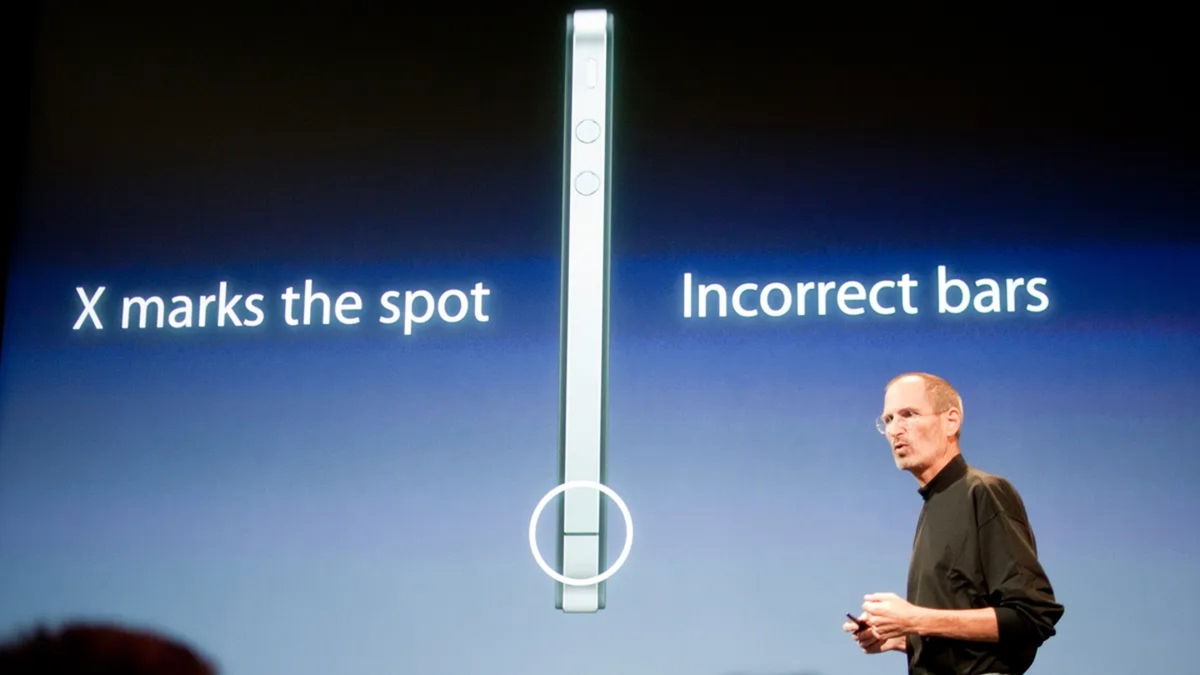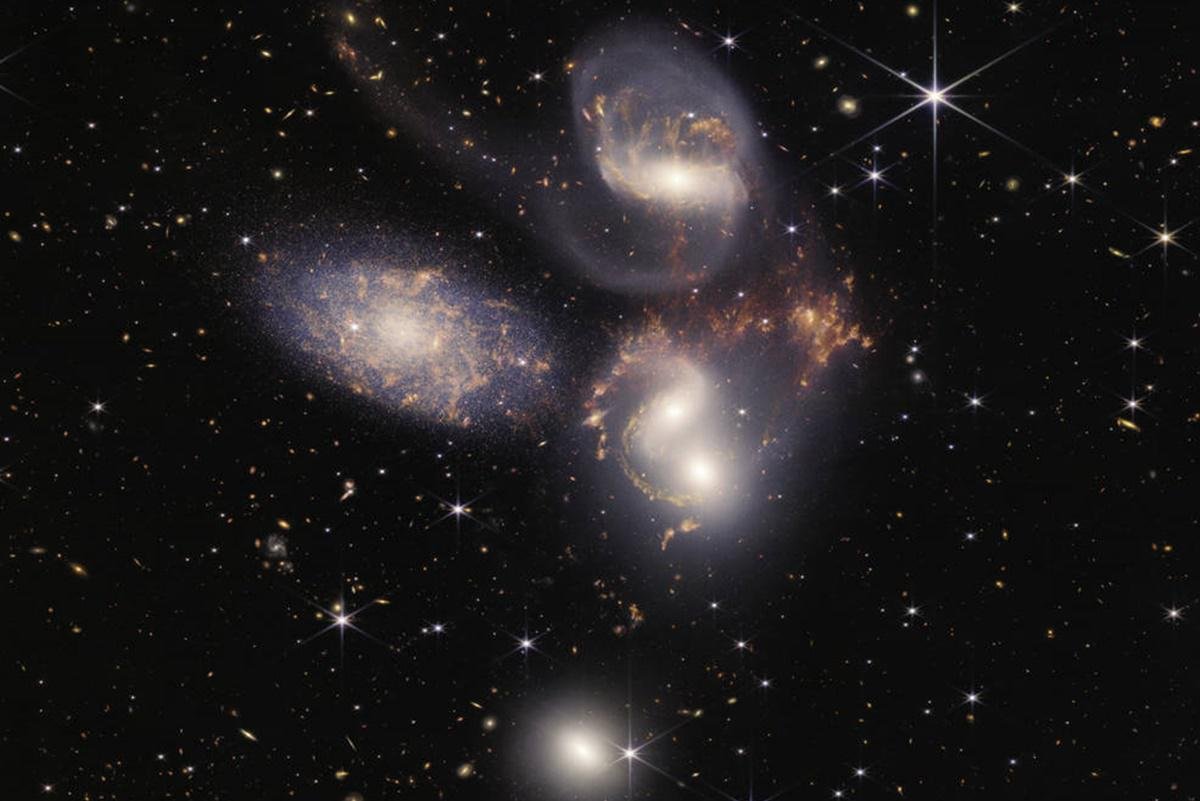*This text was written by a columnist. TecMundo; finally learn more.
that James Webb Space Telescope (JWST) nothing new to revolutionize astronomy. But do you know how the equipment could observe the first stars and galaxies formed after the Big Bang? Let’s understand!
The way we see light from objects is not necessarily the way light is propagated. One of the reasons why this happens is the Doppler effect and we can witness it in our daily lives. The Doppler effect is the shift of light to shorter or longer wavelengths due to the speed of the emission source. An example is an ambulance siren, which has a higher pitch as it approaches and a lower pitch as it moves away.
There are other reasons why light changes wavelength, such as sound. Because of one of these expansion of the universe. When we talk about very distant objects, general relativity Albert Einstein (1879-1955) becomes relevant to how we observe objects.

Light moves through the fabric of space-time, and as the fabric stretches, the light also stretches. It’s like imagining an embroidered fabric. When you stretch the fabric, the embroidery stretches. But for light, that means redshifting. The light from the first stars thus formed will appear redder than they are. In the case of these stars, instead of being able to observe them in the optical range as we normally do, they can be seen in infrared lengths. This is where James Webb comes in.
first stars
After the Big Bang, light and matter went hand in hand in a hot soup of plasma, which is formed when matter is heated too much and atoms split into nuclei (positive charge) and electrons (negative charge). Therefore, light cannot escape and is trapped between positive and negative charges.
With the expansion of the universe, matter cooled and nuclei and electrons came together to form the atoms we know as hydrogen. So the light was free to travel for the first time. And the atoms began to condense and form the first stars.
What is so interesting about it?
Never in human history have we observed the first stars. And James Webb will finally be able to do it.

First Images of James Webb
During this week, the consortium responsible for building and operating the telescope, including the United States Space Agency (NASA), the European Space Agency (ESA), the Canadian Space Agency (CSA), the Space Telescope Science Institute (STSci), and more than 20,000 people , released the first images and the internet went crazy.
The first images showed large objects in the Universe in great detail. And in the next few months we will see even more incredible advances in astronomy.
Camila de Sa Freitascolumnist TecMundoHe holds bachelor’s and master’s degrees in astronomy. He is currently a PhD student at the European Southern Observatory (Germany). The distinctive Galaxy Coroner explores evolutionary scenarios for galaxies and possible changes in the production of stars. He is on social media as @astronomacamila.
Source: Tec Mundo
I am Bret Jackson, a professional journalist and author for Gadget Onus, where I specialize in writing about the gaming industry. With over 6 years of experience in my field, I have built up an extensive portfolio that ranges from reviews to interviews with top figures within the industry. My work has been featured on various news sites, providing readers with insightful analysis regarding the current state of gaming culture.












